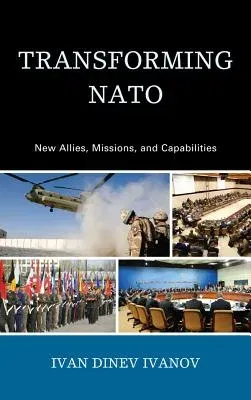Transforming NATO: New Allies, Missions, and Capabilities, by Ivan Dinev
Ivanov, examines the three dimensions of NATO's transformation since the
end of the Cold War: the addition of a dozen new allies; the undertaking
of new missions such as peacekeeping, crisis response, and
stabilization; and the development of new capabilities to implement
these missions. The book explains these processes through two mutually
reinforcing frameworks: club goods theory and the concept of
complementarities. NATO can be viewed as a diverse, heterogeneous club
of nations providing collective defense to its members, who, in turn,
combine their military resources in a way that enables them to optimize
the Alliance's capabilities needed for overseas operations. Transforming
NATO makes a number of theoretical contributions. First, it offers new
insights into understanding how heterogeneous clubs operate. Second, it
introduces a novel concept, that of complementarities. Finally, it
re-evaluates the relevance of club goods theory as a framework for
studying contemporary international security. These conceptual
foundations apply to areas well beyond NATO. They provide useful
insights into understanding the operation of transatlantic relations,
alliance politics, and a broader set of international coalitions and
partnerships. This update in April 2013 covers new developments related
to NATO's transformation after this book was originally published: http:
//homepages.uc.edu/ ivanovid/pdfs/book_update.pdf

